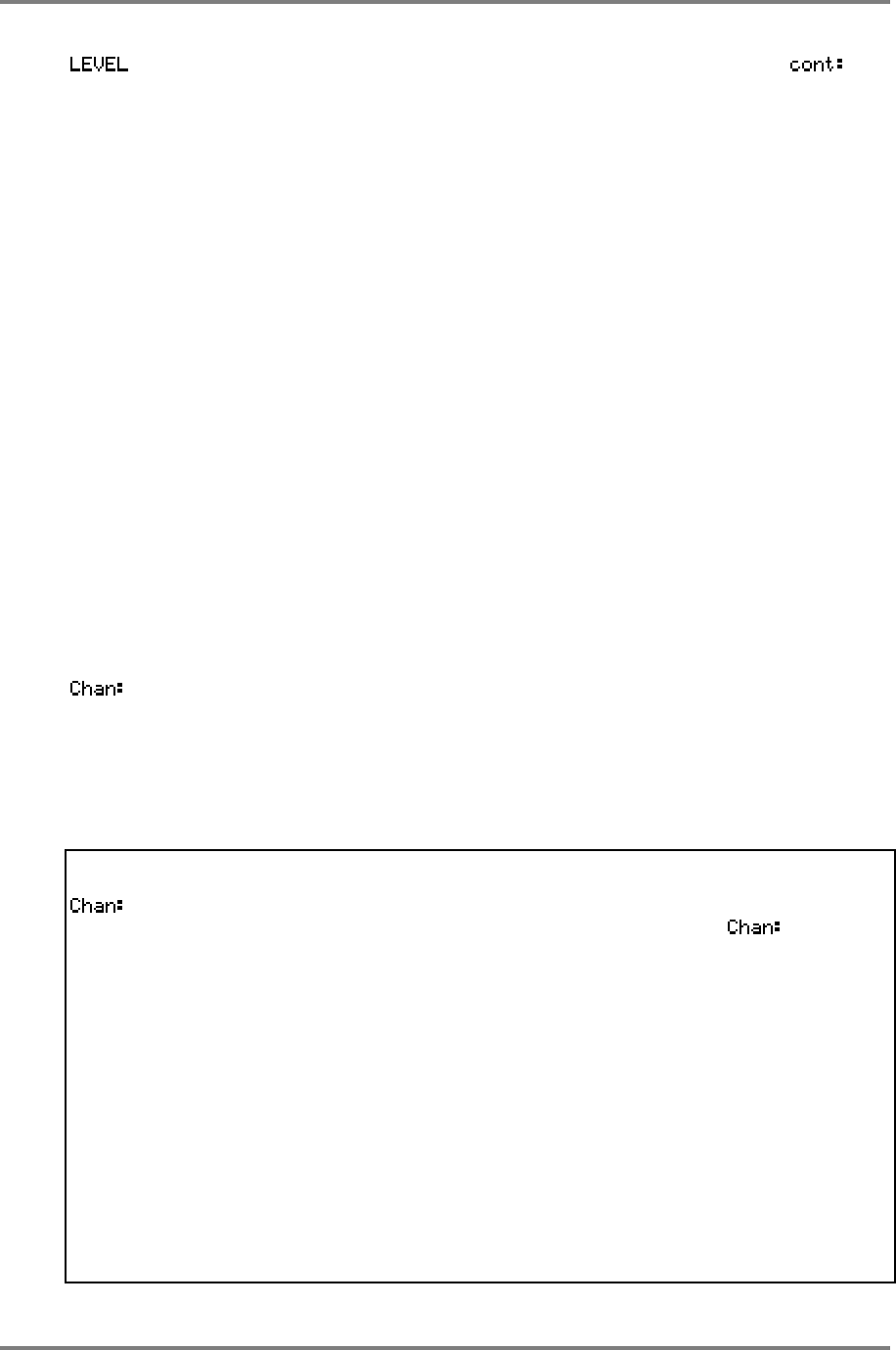
EFFECTS EDIT
Page 186 CD3000XL OperatorÕs Manual
Depending on the MIDI controller selected in the field,
you may select whether crossing a threshold level of 64 that
will cause the speed change or a switch action that will cause
the speed change.
When LEVEL is selected, once the controller goes past a
level of 64, the speed will change. When TOGGLE is
selected, the selected controller will switch between speed 1
and speed 2 and vice versa. Confused? Read on!
Let’s take a practical example. Let us imagine that you are
using the modwheel (controller #1 - the default) to switch
between speed 1 and speed 2. With LEVEL selected,
pushing the modwheel up will cause the controller to go over
the 64 threshold (i.e. as it moves from 0-127) and the rotary
speaker effect will change from speed 1 to speed 2 (i.e.
typically, get faster). Bringing it back down again will once
again go over the 64 threshold (i.e. as it travels from 127-0)
causing the rotary speaker effect to go from speed 2 to speed
1 (i.e. typically, get slower). However, with TOGGLE selected,
pushing it up will cause it to change from speed 1 to speed 2
but you must bring the modwheel down again and push it
back up to go from speed 2 to speed 1.
LEVEL is recommended for use with continuous controllers
(modwheel, pressure, breath, footpedal, etc.), whilst TOGGLE
is recommended for ‘switch action’ controllers (footswitch type
controllers such as sustain, etc.).
This parameter is really only of any use when in MULTI mode.
Because several programs may be sharing the same effect,
you must designate which MIDI channel will initiate the change
from SPEED1 to SPEED2. If the effect is to be used in a
MULTI, select the channel of the controller that will trigger the
change in speed (for use in SINGLE mode, select the same
MIDI channel as the program’s MIDI channel).
NOTE 1: In practice, it is likely that only one sound will be routed to a multi-effects channel
producing a rotary speaker effect (typically, an organ sound) in a multi. In this case, set the
parameter to the same channel as the part the organ sound (or whatever) is in. For
example, if the organ sound is in PART 5 on MIDI channel 5, set 5 in the field shown
here.
Of course, more than one part may be routed to a multi-effects channel producing a rotary
speaker effect but one channel must be designated to initiate the change from SPEED1 to
SPEED2. Select as appropriate.
NOTE 2: Please note that because the stereo mod section passes through the echo section,
any stereo mod effects you create will be ‘monofied’ when mono delay effects are selected. As
a result, you cannot effectively use the rotary speaker effects with mono echo.
NOTE 3: You will find that the rotary speaker effect is best created with no ‘straight’ signal.
You should use the DIRECT SIGNAL: ON/OFF function in the FX OUTPUT pages to turn off
the straight signal. Preset rotary speaker effects have DIRECT SIGNAL set to OFF.
TIP: You may find the sound of a rotary speaker is enhanced using just a hint of distortion in
the distortion section to re-create the overdrive effect commonly found on rock organ sounds.


















